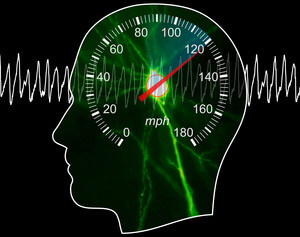The research provides new insights into the operation of spatial memory. Moreover, it can help improve our understanding of movement-related symptoms, such as those associated with Parkinson's disease.

The researchers of the German Institute for Neurodegenerative Diseases DZNE - German Center for Neurodegenerative Diseases and the University of Bonn, discovered neural circuits in the brains of mice responsible for movement and navigation in space. The nerve cells, which are estimated to have a human counterpart, provide the initial signal for movement and also provide the brain with information related to speed.
An article published by the group, led by Prof. Stephan Remy, was published in the current issue of the journal Neuron.
The research provides new insights into the operation of spatial memory. Moreover, it can help improve our understanding of movement-related symptoms, such as those associated with Parkinson's disease.
In a familiar environment, our drives are goal-driven. For example, if we leave the desk for a coffee break, we follow predetermined routes that have been stored in memory. Through the office door, left into the corridor, pass by the window, etc. To keep us on track, our brains have evolved to process sensory input quickly. "This is a fundamental area of brain research that must be discussed. Not just our way to the coffee machine, but any time we move around the space. For example when we are in a car or on a bicycle" explains Rami.
As the speed increases, so does the rate of data traffic. "The faster we move, the less time the brain has to look for environmental cues to associate the location with the spatial map we have in the brain. Our perception must keep pace with the speed of traffic so that we remember the right way," he explained.
rhythmic fluctuations
It has been known for some time that the hippocampus, the part of the brain that controls memory, and in particular spatial memory - adapts itself to the speed of movement. "The electrical activity of the hippocampus undergoes rhythmic changes. The faster we move, the faster certain nerve cells work," says Rami.
"The change in speed increases the sensitivity of the brain, which is able to receive relatively larger amounts of input from the senses, and process it while moving."
But how does the brain really know how fast we are moving? So far there has been no answer to this question. Rami and his colleagues have now coded the mechanism. To this end, they stimulated specific areas in the mouse brain and described the brain activity and the movement of the mice.
"We identified the neural circuits in mice that link their spatial memory to movement speed. This intermediary is an important foundation for the functioning of spatial memory." Rami says. "We estimate that humans have similar nerve cells, because the brains of mice and humans have a similar structure in these areas.
small cell groups
The suspicious cells are in the medial septum, a part of the brain directly connected to the hippocampus. They consist of relatively small groups containing several thousand cells.
"These cells collect information from the sensory and motor movement systems, determine the movement speed and transmit it to the hippocampus. In this way, they adjust the spatial memory system so that it optimally processes the sensory stimulation during movement." Rami explains. However, these circuits also have additional functions "we discovered that they also give the initial signal for movement and they actively monitor the movements of the signals. To date, the properties of this control have been attributed almost exclusively to the cerebral cortex.
.
These new neurons are associated with areas of the brain that are affected in Parkinson's patients. The symptoms of this disease include movement problems and it can also cause dementia." In this context, our findings go beyond the function of spatial memory. They have the potential to provide us with new insight into how the working memory systems and movement performance are affected by Parkinson's disease." Remy said.
to the notice of the researchers

4 תגובות
Click here to
You are confusing psychological time with physical time. Psychological time refers to our personal feelings about time as an example of "how time runs". Physical time refers to the measurement of time by a clock that is done by the hands of a clock. When you have to get to a meeting at a certain time, you look at the clock to make sure you won't be late.
I try very hard not to confuse the office desk with the desk desk
¨
When do you turn it into a drug that slows down the matrix?
I have been shouting for years that time is a matter of feeling and not something absolute